 W
WAbyaneh is a village in Barzrud Rural District, in the Central District of Natanz County, Isfahan Province, Iran. At the 2006 census, its population was 305, in 160 families.
 W
WArdeshir Castle is a historical castle located in Kerman County in Kerman Province, The longevity of this fortress dates back to the Sasanian Empire.
 W
WAshpaz Khaneh Zahhak Castle is a historical castle located in Fasa County in Fars Province, The longevity of this fortress dates back to the Parthian Empire and Sasanian Empire.
 W
WAtashgah Castle is a castle in the city of Kashmar, and is one of the attractions of Kashmar. This castle was built by the Sasanian government and it was famous in ancient times.
 W
WAzhdeha Peykar Castle is a historical castle located in Larestan County in Fars Province, The longevity of this fortress dates back to the Sasanian Empire.
 W
WPāpak Fort or Babak Castle, ″Ghal’eh-e Baz″ is a large citadel on the top of a mountain in the Arasbaran forests, 50 km from Ahar, one parasang from Ardabil, 6 km southwest of Kalibar City in northwestern Iran. According to Ibn al- Nadim, it was the stronghold of Javidhan and Babak Khorramdin, the leaders of the Khurramites in Iranian Azerbaijan who fought the Islamic caliphate of Abbassids. The fort was conquered and ruined by Afshin′s army on 837.
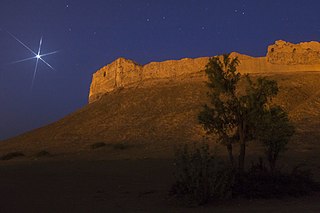 W
WBampur Castle is a historical castle located in Bampur County in Sistan and Baluchestan Province, The longevity of this fortress dates back to the Sasanian Empire.
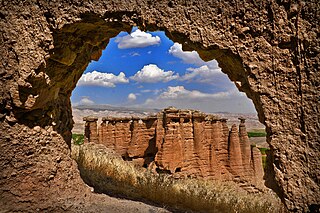 W
WBehestan castle is a historical castle located in Mahneshan County in Zanjan Province, Iran, near Behestan village and next to Ghezel Ozan river. The first building of this fort belongs to the Sasanian Empire, but it was used in the Islamic period and the 5th to 7th centuries AH. The remains of Behestan castle have been registered in the Iran National Heritage List as number 1458. The exact date of this castle is still unclear, so that in various texts the time of its construction has been attributed to the period of the Medes, Achaemenids and Sassanids. Behestan Castle is one of the 20 historical castles of Mahneshan city of Zanjan province, the period of their use is estimated to be up to the fifth century AH. The rulers of that period, according to the special conditions of that time, started to build this fort to defend themselves and the people against the enemies. The castle has several floors. The upper floors of Behestan Castle were built for defense and the lower floors were built as slums and food storage. The builders of this castle, according to the original plan they had in mind, started digging mountains and emptying rocks and soils, thus creating rooms. Over time, as the number of rooms increased, they added communication corridors to the building in the form of corridors.
 W
WBelqeys Castle is a historical castle located in Esfarayen County in North Khorasan Province, The longevity of this fortress dates back to the Sasanian Empire.
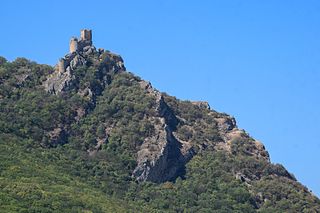 W
WChirag Gala, also spelled Çiraq Qala or Çirax Qala, which means lamp castle in Azerbaijani is a ruined ancient fortress overlooking the Caspian coastal plains north of Baku in Azerbaijan. It is located on the top of a mountain, in the Guba Forest. It was constructed by the Sassanid Persians in the 5th century, it was used as a defense for the khanate of Quba in the 18th century.
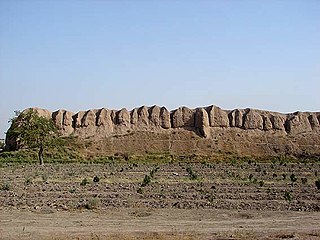 W
WGabri Castle is a historical castle located in Ray County in Tehran Province, The longevity of this fortress dates back to the Sasanian Empire.
 W
WHezar Darb castle is a historical castle located in Abdanan County in Ilam Province, The longevity of this fortress dates back to the Sasanian Empire.
 W
WHulagu Khan Castle is a historical castle located in Osku County in East Azerbaijan Province, The longevity of this fortress dates back to the Sasanian Empire.
 W
WIraj Castle is a fortification built in 4th or 5th century AD in the central region of Ray, Sasanian Empire, near modern-day Asgarabad-e Abbasi, Iran. The monument is known for its peculiar design: large defensive walls with embedded rooms and arches, with towers at regular intervals, enclosing a vast empty interior of 190 hectares.
 W
WThe Izad Khast Castle is located in Izadkhast in the Fars Province, central Iran. The castle was built during the Sassanid Empire and functioned as fortified walled city on the ancient Silk Road that ran through central Iran. It is the second largest adobe building in the world after Arg-e Bam.
 W
WJushin Castle is a historical castle located in Varzaqan County in East Azerbaijan Province, The longevity of this fortress dates back to the Sasanian Empire.
 W
WKangelo Castle is a historical fortress located in Kangelo Village, Savadkuh County, Mazandaran Province, Iran. Kangelo Castle was built during the time of the Sassanian Empire. According to historians, this castle was used as a place to worship the Mitra.
 W
WKarshahi Castle is a historical castle located in Aran va Bidgol County in Isfahan Province, The longevity of this fortress dates back to the Sasanian Empire.
 W
WKhavidak castle is a historical castle located in Yazd County in Yazd Province, The longevity of this fortress dates back to the Sasanian Empire.
 W
WLambsar, Lamasar, Lambasar, Lambesar or Lomasar (لمسر) was probably the largest and the most fortified of the Ismaili castles. The fortress is located in the central Alburz mountains, south of the Caspian Sea, about 120 km from present-day Tehran, Iran. Lambsar is to the northeast of Razmian village.
 W
WThe Maiden Tower is a 12th-century monument in the Old City, Baku, Azerbaijan. Along with the Shirvanshahs' Palace, dated to the 15th century, it forms a group of historic monuments listed in 2001 under the UNESCO World Heritage List of Historical Monuments as cultural property, Category III. It is one of Azerbaijan's most distinctive national emblems, and is thus featured on Azerbaijani currency notes and official letterheads.
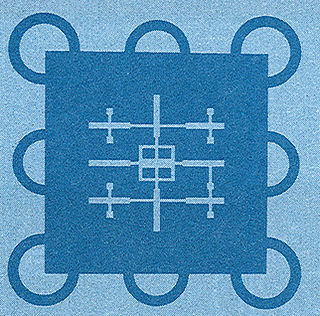 W
WMeimoon Ghal'eh, also known as Mehman Ghal'eh and Mobarak Ghal'eh, is one of several castle ruins scattered throughout the Qazvin area, in Iran.
 W
WMount Khwaja or Mount Khwajeh is a flat-topped black basalt hill rising up as an island in the middle of Lake Hamun, in the Iranian province of Sistan and Baluchestan.
 W
WNahāvand Castle was an ancient castle from Sasanian Persia that was located in what is now the city of Nahavand in Hamedan province, Iran. The fall of this castle in the Battle of Nahavand was a major turning point in the Islamic conquest of Persia. Nonetheless, the castle survived up until the time of Naser al-Din Shah Qajar. It was said that when digging a qanat, Naser al-Din Shah found a treasure. He then ordered the castle to be destroyed in order to find more treasures; however, no more were found.
 W
WNakhal Fort is a large fortification in Al Batinah Region of Oman. It is named after the Wilayah of Nakhal. The fort houses a museum, operated by the Ministry of Tourism, which has exhibits of historic guns, and the fort also hosts a weekly goat market.
 W
WThe Naryn Castle or Narin Castle is a mud-brick fort or castle in the town of Meybod, Iran. Structures like these constituted the government stronghold in some of the older (pre-Islamic) towns of central Iran. Some of these castles incorporate mud bricks of the Medes period and of the Achaemenid and Sassanid dynasties.
 W
WOnoguris, renamed as Stephanopolis in the Byzantine period, was a town in Lazica recorded by Byzantine historian Agathias in his narration of the Lazic War between the Byzantine Empire and the Sasanian Empire. Its exact location is still under study.
 W
WPoshtab Castle, also known Pashtou Castle is an ancient site in Poshtab village, Ahar County in north-west of Iran. Poshtab Castle is built on a rock in which there is stairs and engraved cabins. There is only one way to enter to castle and other sides face to inaccessible dangerous cliffs around itself. The Building dates back Sassanid and Parthian empire. Poshtab Fortification is located near Qahqaheh Castle.
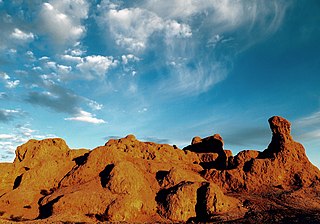 W
WQahqah Castle is a historical castle located in Ravar County in Kerman Province, The longevity of this fortress dates back to the Sasanian Empire.
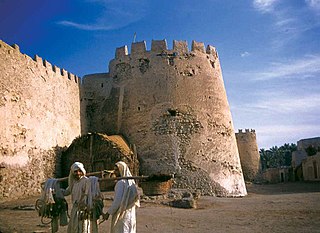 W
WQal'at al-Qatif or Qatif Castle was a historic castle in the city of Qatif, Saudi Arabia. Initial construction of the castle dates back to the third century by the Sassanids. It was then refurbished by the Ottomans and utilized as a defensive military base for the Persian Gulf region. Later, the castle was turned into a civilian-purpose warehouse for the locals. The castle itself was a massive complex of densely populated area and several facilities, including eleven mosques, a keep for the king, keeps for the guests, which are surrounded by the citadel wall. It was oval-shaped, and John Gordon Lorimer estimated that the longest side reaches 365 meters from the east to west, and it reaches 275 meters from the north to south. At its peak, it contained the population of 5,000, and 300 shops. It also equipped moat and farmlands for orchard, connected to nearby Qatif oasis. The castle was destroyed in the 1980s, after the ownership was taken away from the locals, and the buildings and houses were gradually removed. Today, there are only 18 houses left in the field with the rest of the places turned into a public square and parking lots.
 W
WQal'eh Bozi is a complex of caves sites located about 25 km (15.5 mi) south-southwest of Isfahan, Iran; northeast of Dizicheh and north of Hassanabad. The sites include two rock shelters and a cave located at altitudes between 1,750 and 1,810 m above sea level. The caves are found on the southern face of a limestone mountain of lower Cretaceous age that rises to more than 500 m (1,640.4 ft) above the plain floor. From the cave entrance there is a commanding view of the plain below and of the Zaiandeh Rud River flowing about 2 km (1.2 mi) to the south and southeast.
 W
WQal'eh Dokhtar or Ghale Dokhtar or Dokhtar Castle or Dezh Dokhtar, is a castle made by Ardashir I, in present-day Fars, Iran, in 209 AD. It is located on a mountain slope near the Firouzabad-Kavar road.
 W
WRayen Castle is an adobe castle 100 Kilometers south of Kerman province, Iran. It is situated on the skirts of the mountain Hezar. The medieval mudbrick city of Rayen is similar to Arg-e Bam which was destroyed in an earthquake in December 2003. Rayen displays all the architectural elements of a deserted citadel. It is extremely well preserved, despite numerous natural disasters that have destroyed similar structures nearby, and it is one of the most interesting sites in Iran.
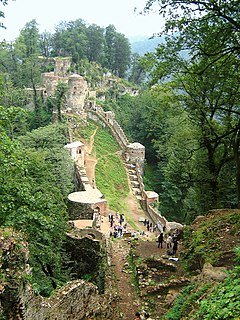 W
WRudkhan Castle ; also Roodkhan Castle, is a brick and stone medieval fortress in Iran that was built by the Gilaks to defend against the Arab invaders during the Muslim conquest of Persia. With the fall of the Sasanian Empire, this area became a defensive position against the Arabs in the then-newly established Tabarestan.
 W
WSang Castle is a historical castle located in Sirjan County in Kerman Province, The longevity of this fortress dates back to the Sasanian Empire.
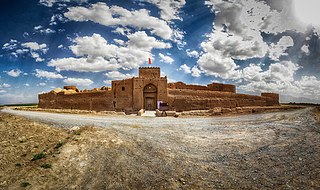 W
WSar Yazd Castle alternatively spelled Saryazd is a Sassanid fortification in the village of Sar Yazd, Yazd Province, Iran. It is located 50 kilometers from the city of Yazd.
 W
WSarouyeh was a large library in ancient pre-Islamic Iran. The 10th century chronicler Ahmad ibn Rustah refers to it as "Sarough" (ساروق). The Fars Nameh of Ibn Balkhi calls it Haft Halkeh.
 W
WThe Sassanid Palace at Sarvestan is a Sassanid-era building in the Iranian city of Sarvestan, some 90 km southeast from the city of Shiraz. The palace was built in the 5th century AD, and was either a gubernatorial residence or a Zoroastrian fire temple.
 W
WSemiran castle is a historical castle located in Qazvin County in Qazvin Province, The longevity of this fortress dates back to the Sasanian Empire.
 W
WShapur Khast or Falak-ol-Aflak is a castle situated on the top of a large hill with the same name within the city of Khorramabad, the regional capital of Lorestan province, Iran. This gigantic structure was built during the Sassanid era (224–651).
 W
WShavvaz castle is a castle in Shavvaz, Iran, and is one of the attractions of Yazd Province. This castle was built by the Sasanian Empire.
 W
WSheikh Makan Fort is a historical site in Sheykh Makan village in Darreh Shahr County, Ilam Province, Iran. The fort was constructed in Sasanian Empire. The fort was registered on Iran National Sites on March 8, 2003.
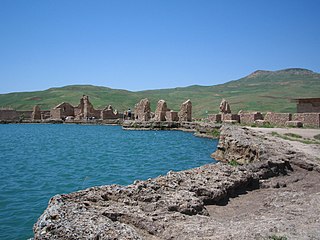 W
WTakht-e Soleymān, is an archaeological site in West Azerbaijan, Iran dating back to Sasanian Empire. It lies midway between Urmia and Hamadan, very near the present-day town of Takab, and 400 km (250 mi) west of Tehran.
 W
WThe Yazdegerd Castle is a pre-medieval Sassanid castle in Nakhchivan, Azerbaijan. It is constructed solely of mud. The castle is named after the last Sassanid king, Yazdegerd III (632–651).
 W
WZendan Castle is a historical castle located in Deyr County in Bushehr Province, The longevity of this fortress dates back to the Sasanian Empire.